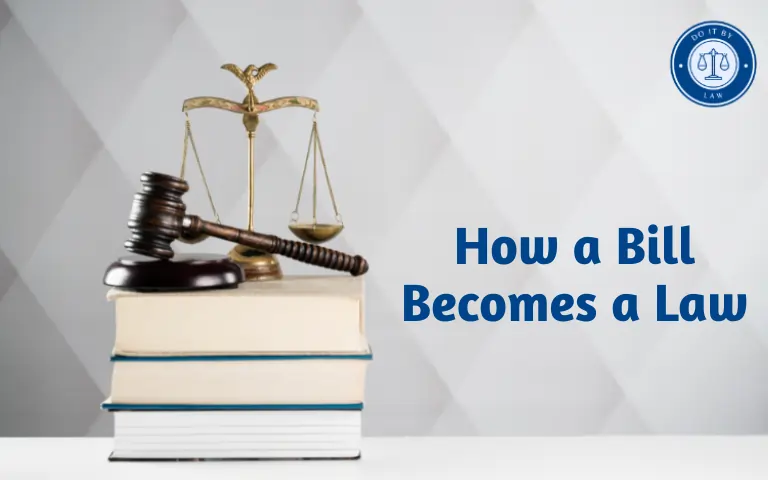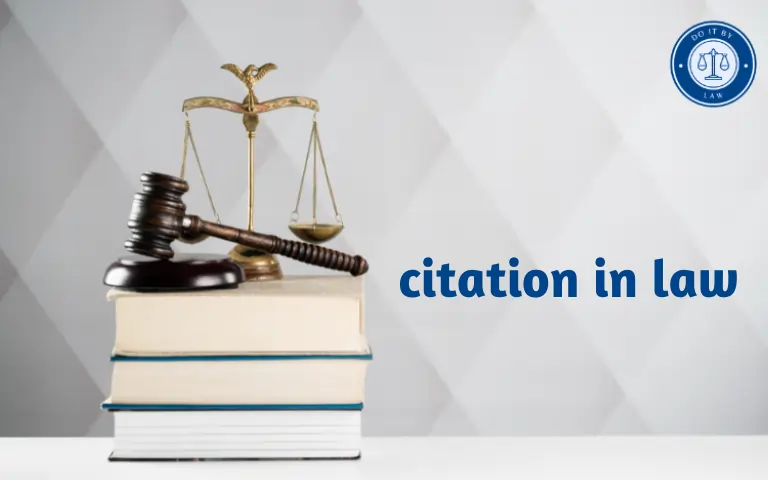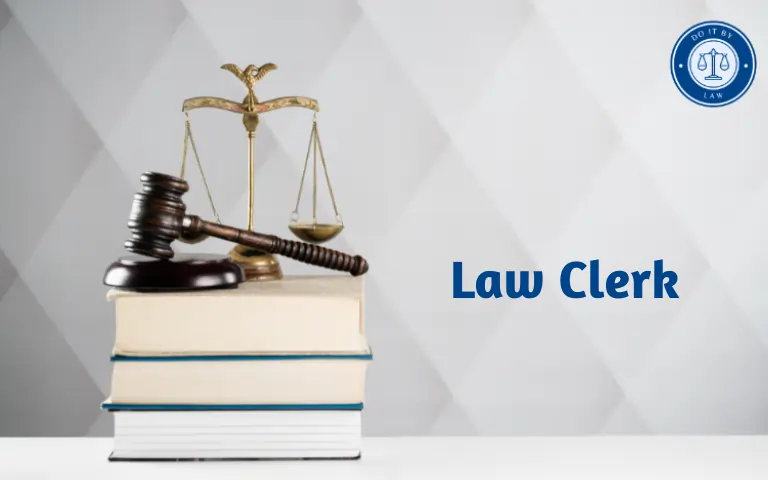How a Bill Becomes a Law: A Step-by-Step Guide
The process of how a bill becomes a law can seem complicated, but this guide breaks it down into easy-to-follow steps. First, an idea for a new law must come from somewhere. This is usually from a member of Congress, an interest group, a public petition, or the President. Next, the proposed bill gets written up, sponsored by members of Congress, and assigned to a committee.
If it gets through the committee, it goes to the House floor for debate and voting. If it passes here, it goes through a similar process in the Senate. Finally, if the House and Senate both pass the bill in the same form, it goes to the President. If the President signs the bill, it becomes an official law! There are many checks and balances along the way, as well as variations to this process.
How the Idea for a Bill Becomes a Law Starts
Before a bill can begin its journey to become law, it has to start as an idea. This idea could come from a variety of places:
- Member of Congress: An individual Congressman or Congresswoman may have an idea for a new law based on their own experiences or requests from their constituents. They may write up the idea as a bill themselves or ask other members of Congress for support.
- Interest Groups: Organizations that represent certain sections of society, like businesses, labor unions, or ideological groups, often lobby Congress to introduce bills favorable to their causes.
- Public Petition: Citizens can petition members of Congress directly to ask them to address certain issues or grievances through new legislation.
- Executive Branch: The President or executive agencies can propose legislative ideas to members of Congress that aim to support the administration’s policy agenda. The President also customarily provides an extensive legislative program in the annual State of the Union address.
So in many cases, the initial idea for a new law begins outside the Congress itself. Groups or individuals make their case to lawmakers about why certain changes in the law need to happen. The member of Congress who decides to sponsor the proposed bill must then gather support from other members through lobbying and negotiation.
How a Bill Gets Written
Once an idea for a new law generates enough interest in Congress, the next step is for the idea to get written out as a bill. This is no simple task. Highly detailed and complex legislation can run hundreds of pages long. Outlining all the key provisions and legal language requires expertise and precision.
There are a few ways a bill may get written:
- The member of Congress who is introducing the bill may write an early draft themselves, though they will usually have assistance from legal experts on their staff.
- The legislative counsels in the House and Senate can help craft the legal language and formatting to meet the standards of the chamber.
- Interest groups, policy organizations, businesses, and state-level governments will often propose full legislative language for members of Congress to sponsor and introduce verbatim. This is known as drafting “model legislation.”
- For particularly complex legislation, a member of Congress may establish a working group to bring together key stakeholders to hash out effective and mutually acceptable bill language. This was done during negotiations over the Affordable Care Act health care law, for instance.
Regardless of who pens the initial draft, most bills undergo extensive revisions and amendments before they have any chance of progressing through Congress and becoming law. The original bill language should be viewed as a starting point for negotiations.
How a Bill Gets Sponsored
Once a draft bill is in circulation, it needs members of Congress to formally sponsor it before it can be introduced. The primary sponsor in the House or Senate is the person who has taken charge of advocating for the bill and ushering it through the legislative process. There may also be co-sponsors who lend their support as the bill progresses.
Having multiple sponsors and co-sponsors from both parties increases a bill’s visibility and chances for serious consideration. While the lead sponsor will usually share the same party affiliation as the majority of co-sponsors, they will frequently seek out a few key supporters from the minority party as well. This demonstrates the bill’s bipartisan appeal.
If a member of Congress is fully sponsoring a bill, that means they stand behind its provisions 100%. Other members will often hesitate to sign on as co-sponsors if they take issue with any part of the proposed legislation. Lawmakers do not take sponsoring duties lightly since their name and reputation will be associated with that bill as it moves forward.
How a Bill Gets Assigned to a Committee
Once formally introduced in the House or Senate, every bill then gets referred to a committee that has jurisdiction and expertise relevant to the policy issue at hand. Which committee receives the bill depends on the bill’s core focus.
For example, a bill regulating health care services would likely get sent to the Health and Human Services Committee, while a bill dealing with farming subsidies would get referred to the Agriculture Committee. Each chamber has its committees that specialize in various policy domains.
The committee stage is crucial because the bill is much more likely to fail without the committee’s backing. Committees in both the House and Senate are chaired by members of the majority party but also have minority party members as well. So for a bill to get through committee, the lead sponsor must convince members across the aisle to lend their support.
Many bills die in committee if the chairman opposes the bill or the sponsor fails to build broad enough bipartisan support. However, if a committee decides to approve a bill, it will get sent to the wider chamber for consideration.
How a Bill Becomes a Law is Debated and Amended
Once a bill makes it through the initial committee process, it proceeds to the floor of the House or Senate for full debate, amendments, and voting. This is where the real action happens.
In the House, bills are typically considered in the Committee of the Whole, which includes all sitting Representatives and operates according to special rules streamlining debate. In the Senate, bills go directly to the floor since Senators already represent state-wide constituencies.
When a bill reaches the floor, it becomes subject to intensive scrutiny, discussion, and challenges from all sides. Lawmakers spend hours giving speeches and introducing amendments trying to shape the final legislation to their liking before it gets passed. Members may try to filibuster or stall the process if they strongly oppose a bill up for consideration.
It is during this messy floor debate stage that the bill can undergo major transformations through the amendment process. Amendments proposed by committee members, party leaders, or rank-and-file legislators can add, delete, or alter key provisions of the original bill language.
Deals are often struck between opposing sides to moderate extreme measures in exchange for voting support. If enough members can reach a comfortable middle ground through amendments and concessions, the bill has a strong chance of passing.
How Bill Becomes a Law is Voted On
Once the allotted debate and amendment period runs out, each chamber must ultimately vote on whether to approve the final bill before it. Different voting thresholds apply depending on the rules of each body:
House: In most cases, a simple majority vote is needed to pass a bill in the House. This means if 218 out of 435 Representatives vote yes, then the bill passes.
Senate: Due to filibuster rules allowing unlimited debate unless limited by cloture, 60 yes votes are typically needed to bring a Senate bill to final passage. Certain spending or budgetary bills may only require 51 Senate votes to succeed.
If a bill does not get the requisite number of votes, it fails. This is the end of the road since both chambers must pass identical bills independently before they get combined into unified legislation that can be sent to the President. There are no mechanisms to automatically reconcile or merge different House and Senate bills.
Lawmakers may vote based on their policy views, input from constituents, pressure from lobbyists, or the direction of their political party. Members of the majority party are expected to vote consistently with their party on the most controversial bills but may diverge on lower-profile issues.
How the Bill Becomes a Law Goes to Conference Committee
Once a bill passes in the House and Senate independently, the two chambers must hash out a compromise version in cases where the bills have differences in language or provisions. This happens in a special conference committee made up of select Senators and Representatives from relevant committees.
Conference committees contain key negotiators from both parties since any unified bill language must pass both chambers again after the conference before going to the President. Conferees try to balance the House, Senate, and White House priorities while coming up with broadly acceptable final legislation.
Hundreds of differences can exist between House and Senate bills, from minor technical discrepancies to major divides over appropriations or critical program details. No changes can be made to a bill in conference without agreement from both sides. So negotiations require intensive diplomacy and concessions from each party until a satisfactory deal emerges.
If the conference committee cannot get over key disagreements within the bills, no final legislation will get passed on to the President. Once unified bill language does make it out of the conference, the House and Senate must vote again to approve the negotiated version.
How the President Signs or Vetoes the Bill Becomes a Law
The President’s role arrives at the very end of the process, but it carries the most weight. Once both the House and Senate pass identical legislation, they present the final bill to the President. He or she then has 10 days to either:
- Sign the bill into law – By signing a bill, the President formalizes it as a law. Most bills that reach the President’s desk do get signed.
- Veto the bill – If the President opposes the bill strongly enough, he or she can reject it through a veto. Only a 2/3 majority vote in both chambers can override a presidential veto to still make the bill law without the President’s consent.
- Do nothing – If Congress adjourns before 10 days pass and the President has not yet signed or vetoed the bill, it does not become law. This is known as a pocket veto.
Bills supported by the sitting President are highly likely to emerge successfully through Congress and become law. Though Congress can sometimes override an oppositional White House by getting veto-proof majorities. When the President shares the same party as the majority in Congress, many more controversial bills tend to get passed into law.
So in the end, a successful bill must gain approval from the public, Congress, and the President to navigate through the legislative maze that produces a new law. It is designed to be an intentionally long and challenging system of checks and balances. Of the thousands of bills introduced during a Congressional session, only a few hundred on average will ever become law.
Variations in the Legislative Process
While the above process captures the typical life cycle of a bill, there are a few notable variations on how bills get considered and approved in Congress:
Voice Vote / Unanimous Consent: For completely non-controversial bills, congressional leadership may ask for unanimous consent to pass it without objections. This allows quick passage without going through the full process.
Discharge Petition: This petition signed by an absolute majority of House members forces a bill to be brought out of a committee even if the committee chair refuses to advance it.
Rider: Controversial or unpopular legislation can sometimes get attached to essential spending bills that are guaranteed passage. Opponents may have no choice but to approve the rider.
Reconciliation: Key budgetary legislation central to the majority party’s agenda can go through an expedited reconciliation process protected from filibusters.
Closed Rule: In the House, the Rules Committee can issue parliamentary rules severely limiting or prohibiting amendments to the controlling party’s bills when they reach the floor.
So while every bill getting introduced follows the same formal process, majority parties still have some procedural mechanisms to advance their priorities without getting derailed by the opposition. But in general, the bipartisan consensus remains the surest way for a bill to get through committee, and past floor debates, be approved in both chambers, and land on the President’s desk.
Frequently Asked Questions on How Bills Become Laws
- How long does it take for a bill to become law?
There are no hard rules dictating the timeframe bills must move through Congress. Some ideas for new laws take decades of advocacy before reaching serious consideration. Once introduced, a bill can pass in a few months or a few years depending on its level of controversy and priority. On average, only a small percentage of bills will ever get through committee or pass floor votes to be signed into law. - Can the President introduce new bills?
No, the President cannot directly introduce legislative bills himself in Congress. But the White House frequently works very closely with allies in Congress to have them formally sponsor and introduce the President’s legislative ideas. The President’s State of the Union address also traditionally outlines an administration’s priorities for congressional action. - Do all laws start as bills?
Yes, all federal laws begin as bills introduced in either the House or Senate, then must pass through the full legislative process to become law. However, other congressional actions like joint resolutions or concurrent resolutions can have the force of law for limited circumstances without needing the President’s signature. - Who writes the final version of a bill?
Usually, a conference committee writes the final version that unifies the House and Senate bills. But if the House and Senate both initially pass






